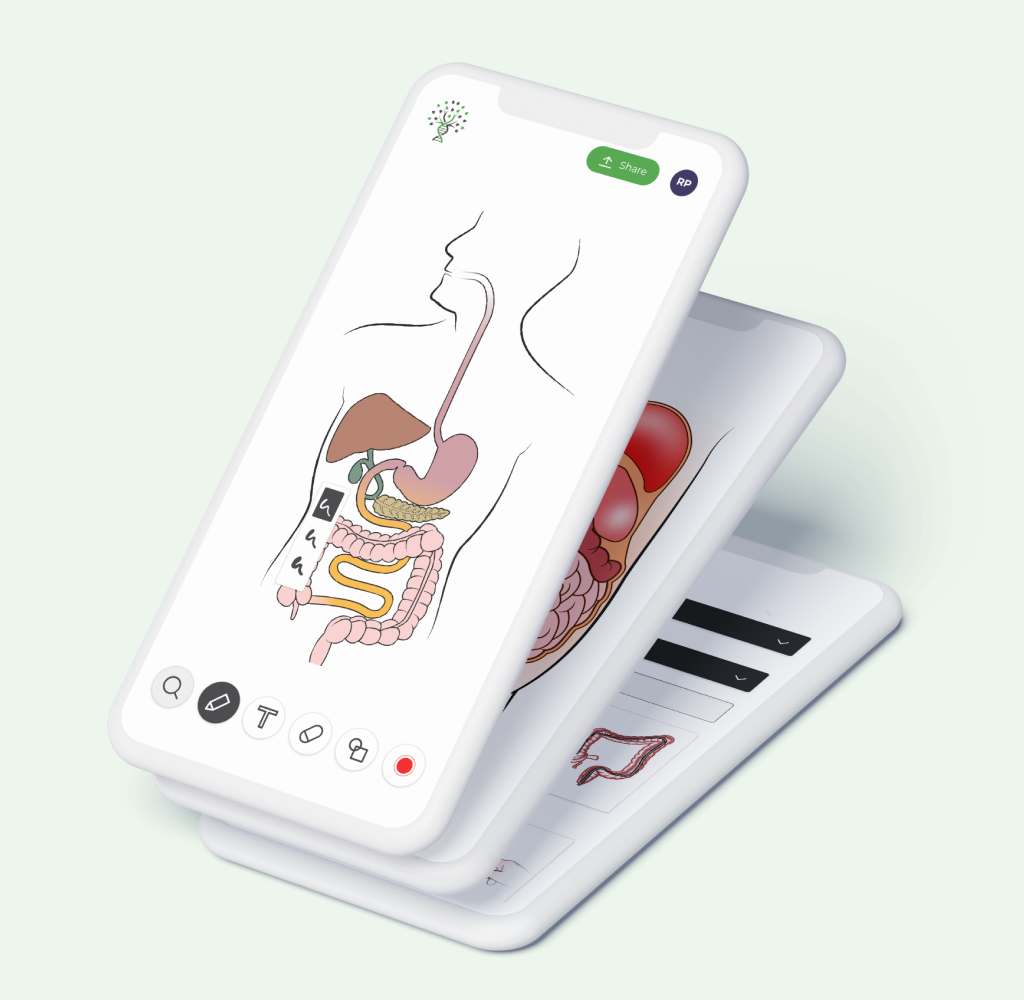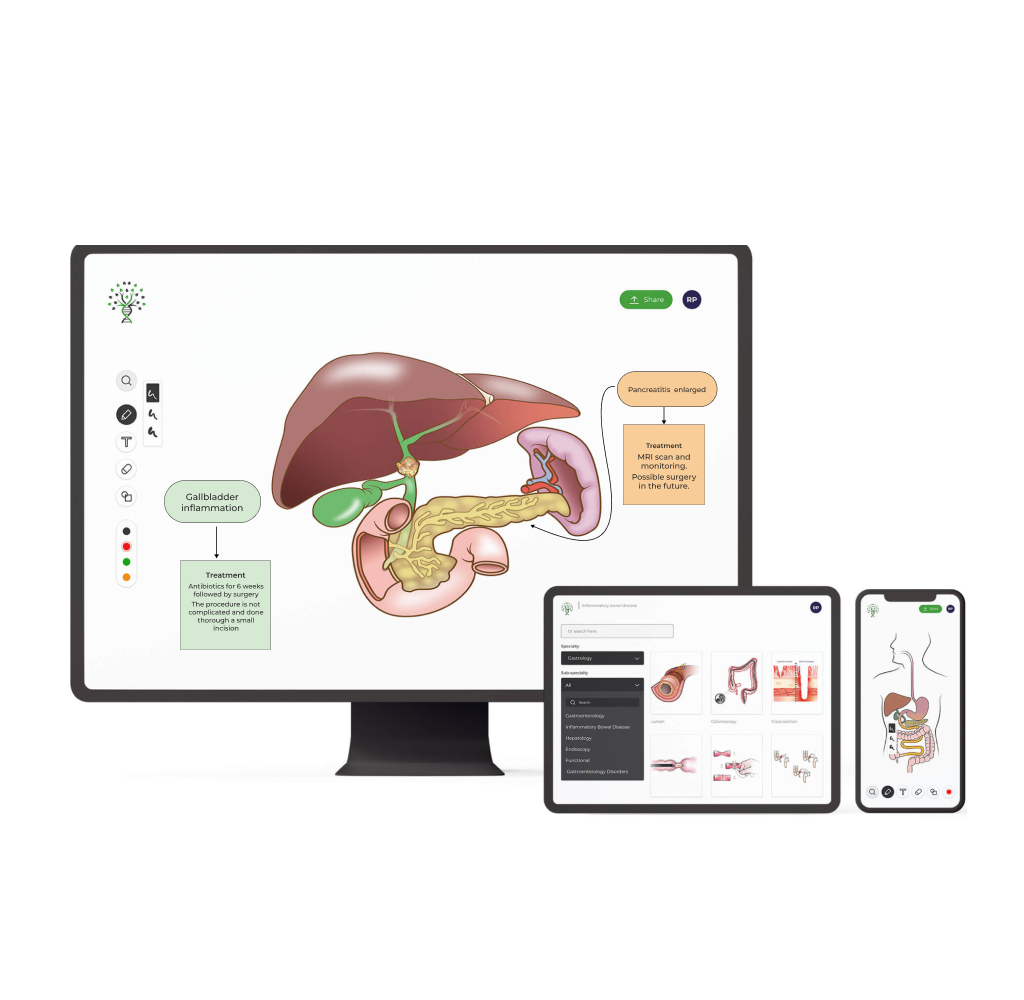PostScript Medical
PROJECT
User research
Device-agnostic application
Tool, dashboard, website
ROLE
Product Design Lead
URL
PostScript Medical is a startup founded by a team of Gastroenterology dieticians and Gastroenterology consultants, with a mission to empower patients and help them navigate the complex world of medical issues, treatment plans, and processes.
Background
Statistics show that once patient leaves a hospital or surgery, they forget up to 80% of the medical information provided by their healthcare practitioners.
This is largely because of three basic factors:
1- Use of difficult medical terminology.
2- The mode of information (e.g. spoken versus written).
3- Factors related to the patient, such as low education, age, language barriers, stress, and anxiety.

Role & approach
The first step in this process was to guide the client through the stages we would go through to create a successful, user-focused product.
They had experienced the problems first-hand but, I was interested in discovering solid data to use in making all design decisions moving forward.
1.0 Requirments gathering
We conducted qualitative research and surveys with patients, doctors, nurses, and dieticians, to understand their pain points, and collected insights into the understanding and retention of information given to patients during consultation sessions.
They told us that patients, elderly people especially, had a hard time following their treatment plans. They all complained that there was a lot to take in during the 15-minute slot they got with their care team.
Language barriers, age, and other factors reduce the ability to retain information.
Business insight
Almost all healthcare professionals had experienced difficulties conveying issues, and treatment plans simply and effectively. This resulted in an increase in consultation time and patients not adhering to the treatment plans given by their healthcare teams.
Health professionals would benefit from a tool to convey information visually. A tool to explain things in everyday language.
Customer insight
The research showed that 95% of patients forgot up to 80% of the information they received once they left their consultation.
Patients found it hard to understand complex medical terminologies.
Patients also felt they were out of control which resulted in uncertainty and anxiety.
Experience vision
Create a simple tool using annotations, diagrams, and illustrations, to make the communication process quick, effective, and memorable.
Enable patients to keep a visual record of the conversation to refer back to.
2.0 Definition & vision
One of the best things I managed to do was to get a group of patients, doctors, nurses, dieticians, and tech engineers together to collectively understand the data we collected, define the problem statements, and explore potential solutions together.
Scenarios, user stories, and ‘How Might Wes’ helped us come up with a list of ideas. We quickly converted these into visual ideas using a Crazy 8's exercise which the team loved and got very excited to put their thoughts on paper.
Through a simple voting system, we prioritised a set of features that we sketched, prototyped, and tested with a wider community.


3.0 Design execution
We created an application to replace old-school ways of conveying information to patients while in consultation.
The application is simple and intuitive. The healthcare professional loads an illustration of the body part being discussed, and they can use simple shapes and tools to annotate and explain both the issues as well as treatment plans.
The outcome can be shared with the patient via email and the report can also be added to the patient’s medical records.
Results
We evaluated the application with the initial research groups as well as a new group of patients, Clinical Nurse specialists, and doctors. This is what they said about their experience using the platform.
83%
Specialists reported explaining complex medical terms was made easier.
+53%
Increase in adhering to treatment plans and medications.
81%
Specialists reported patients were more engaged during their sessions.
66%
Specialists reported the tool helped patients with language barriers.
+72%
Increase in time efficiency during consultation.